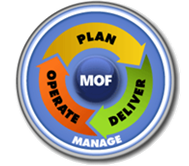Planning MS Exchange Disaster Recovery using the Microsoft Operations Framework (MOF)
Written by Dan Erelis , Microsoft Premier Field Engineer.
As a Premier Field Engineer for Microsoft, I find myself in many different customer environments in just about every major industry sector in Canada. Although every customer is different, the same recurring challenge to implementing Microsoft Exchange disaster recovery exists and that is they don’t know what they are really asking for. As business relies increasingly on email for critical workflow, pressure is placed on IT operations to deliver higher uptimes and faster recoverability.
Level of availability |
Downtime/Year |
90% |
36.5 days |
95% |
18.25 days |
99% |
3.65 days |
99.9% |
8.76 hours |
99.99% |
50 minutes |
99.999% |
5 minutes |
The core issue I see in most environments when it comes to planning a solution is the lack of clearly defined business requirements as a foundational component. A prerequisite to any design should always begin a Business Impact Analysis of the messaging system which includes all supporting infrastructure. Understanding the importance of the messaging service to the business is critical for setting valid service level targets for availability and recovery. The first step in achieving the required availability is to understand how the business relies on the messaging environment is various aspects such as mail flow and client access. Also, understanding the relative importance of the Messaging service versus other IT Services provides IT operations with the budget requirements to properly fund service requirements and reach realistic service level target agreements with the business.
Using MOF (the Microsoft Operations Framework) in the approach is something that can add the required structure during the planning phase and help to achieve a successful implementation that is aligned directly with business requirements.
The PLAN phase of MOF includes stakeholders from groups such as Governance, Risk Management, Finance and Compliance that all participate in the process of defining the requirements for disaster recovery. It should begin with completing the Business Impact Analysis (BIA). This will include factors such as financial impact and critical operational work flow disruption as examples. This ensures the proper decision makers are involved early in the process, that they understand/agree upon the requirements and have the authority to sign off on outstanding risk. Once these requirements and risks are understood, the process of aligning to a technical solution can begin. Of course there are many other moving parts in the process of applying the MOF life cycle, this is meant to provide a glimpse at what MOF can begin to offer an organization.
For more information on MOF and to download free documentation visit the Microsoft Operations Framework 4.0 website.
